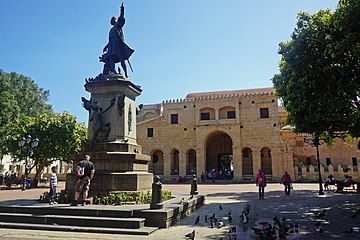
Santo Domingo, once known as Santo Domingo de Guzmán and Ciudad Trujillo, is the capital and largest city of the Dominican Republic and the largest metropolitan area in the Caribbean by population. As of 2022, the city and immediate surrounding area had a population of 1,973,664 while the total population is 4,579,536 when including Greater Santo Domingo. The city is coterminous with the boundaries of the Distrito Nacional, itself bordered on three sides by Santo Domingo Province.

Old San Juan is a historic district located at the "northwest triangle" of the islet of San Juan. Its area roughly correlates to the Ballajá, Catedral, Marina, Mercado, San Cristóbal, and San Francisco sub-barrios (sub-districts) of barrio San Juan Antiguo in the municipality of San Juan, Puerto Rico. Old San Juan is the oldest settlement within Puerto Rico and the historic colonial district of the city of San Juan. This historic district is a National Historic Landmark District and is listed on the United States National Register of Historic Places as the Old San Juan Historic District. Several historical buildings and structures, particularly La Fortaleza, the city walls, and El Morro and San Cristóbal castles, have been inscribed in the UNESCO World Heritage Site list since 1983. Historically the mixed use commercial and residential real estate in the main streets like Cristo Street, Fortaleza Street (north) from Tanca Street to the Governor’s Mansion is the most valuable in the area and it has kept its value and increased steadily through several years despite the past economic turmoils.
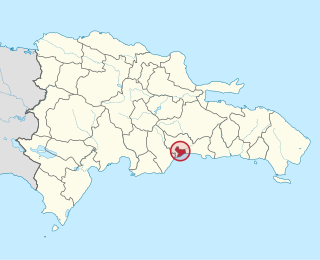
The Distrito Nacional is a subdivision of the Dominican Republic enclosing the capital Santo Domingo. It is not in any of the provinces, but in practice, it acts as a province on its own. Before October 16, 2001, the Distrito Nacional was much larger, including what is now known as Santo Domingo Province. Published statistics and maps generally show the former, larger, Distrito Nacional. The Distrito Nacional has no rural or underdeveloped areas.
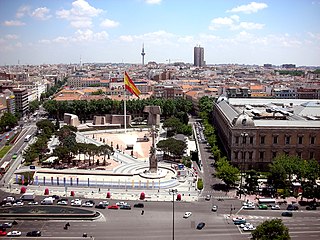
Plaza de Colón is located in the encounter of Chamberí, Centro and Salamanca districts of Madrid, Spain. This plaza and its fountain commemorate the explorer Christopher Columbus, whose name in Spanish was Cristóbal Colón.

Carúpano is a city in the eastern Venezuelan state of Sucre. It is located on the Venezuelan Caribbean coast at the opening of two valleys, some 120 km east of the capital of Sucre, Cumaná. This city is the shire town of the Bermúdez Municipality and, according to the 2010 Venezuelan census, the municipality has a population of 173,877 inhabitants. Carúpano is considered the gateway to the Paria Peninsula and its main commercial and financial center.

La Vega, is the fourth largest city and municipality of the Dominican Republic. It is in La Vega Province. The city is known as the Carnaval epicenter of the Dominican Republic for its tradition and culture, its large agricultural production methods throughout its province.
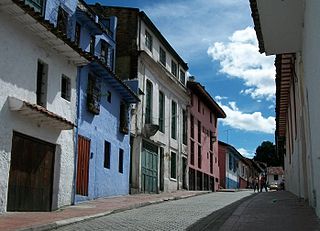
La Candelaria is the 17th locality of Bogotá, Colombia. A historic neighborhood in the city's downtown, it is the equivalent to the Old City in other cities. The architecture of the old houses, churches and buildings has Spanish Colonial, Baroque and art deco styles. It houses several universities, libraries and museums.

Ciudad Colonial is the historic central neighborhood of the Dominican Republic's capital Santo Domingo. It is the oldest continuously inhabited European-established settlement in the Americas. The area has been declared a World Heritage Site by UNESCO. It is also known as Zona Colonial or more colloquially as "La Zona".

The Ozama Fortress, also formerly known as the city wall's Homage tower. It is one of the surviving sections of the Walls of Santo Domingo, which is recognized by UNESCO as being the oldest military construction of European origin in the Americas. It was built between 1502-1508 by the Spanish at the entrance to Santo Domingo's Ciudad Colonial, Dominican Republic, and overlooking the Ozama River. Named after this river, the castle, also referred to as "La Fortaleza" or "The Fortress". It was declared by UNESCO as a World Heritage Site, together with the other historical monuments of the Ciudad Colonial.

The Alcázar de Colón, or Columbus Alcazar is the first fortified European palace built in the Americas. It is located in the Dominican Republic's colonial area of Santo Domingo city, and forms part of the Ciudad Colonial UNESCO's World Heritage Site. It was built between 1510 and 1514 mostly in a Gothic and Renaissance style.

The Cathedral of Santa María la Menor in the Colonial City of Santo Domingo is dedicated to St. Mary of the Incarnation. It is the first and oldest cathedral in the Americas, begun in 1504 and was completed in 1550. It is the cathedral of the Archbishop of Santo Domingo who has the honorary title of Primate of the Indies because this cathedral was the first Catholic diocese and the oldest cathedral established in the New World.

Miguel D. Mena is a Dominican writer, poet, essayist and publisher. He studied sociology in the Autonomous University of Santo Domingo, where he graduated in 1986 with the thesis Ciudad, espacio y poder en Republica Dominicanca. He continued his research on the city of Santo Domingo in Germany, where he has been living since 1990. His PhD from the Free University of Berlin has been recently published under the title: Iglesia, Espacio y Poder: Santo Domingo (1498–1521) Experiencia Fundacional del Nuevo Mundo. He has also written a collections of essays about the urban cuestion in the Dominican Republic and hundred of articles for newspapers and magazines about contemporary aspects of the Dominican capital. He has also written extensively about Dominican literature and especially about Vanguardism in the Dominican literature. He has been one of the leading figures in independent publishing since the mid-1980s in Dominican Republic. He is now at the head of “Cielonaranja Ediciones”

Altar de la Patria, or Altar of the Homeland, is a white marble mausoleum in Santo Domingo, Dominican Republic that houses the remains of the founding fathers of the Dominican Republic: Juan Pablo Duarte, Francisco del Rosario Sánchez, and Ramón Matías Mella, collectively known as Los Trinitarios. Within the mausoleum there are statues of the founding fathers, carved by Italian sculptor Nicholas Arrighini; there is as well an "eternal flame" that is kept lit in memory of the patriots. The Altar is within the Baluatre del Conde and is the main attraction of the Parque Independencia.

La Puerta del Conde was the main entrance to the fortified city of Santo Domingo, named to honor Governor Captain-General Bernardino de Meneses Bracamonte y Zapata, 1st Count of Peñalva, who during his tenure saved the city from a siege in 1655 by Englishmen General Robert Venables and Admiral William Penn amid the Third Anglo-Spanish War.
The following is a timeline of the history of the city of Santo Domingo in the Dominican Republic.

Monumento a la Mujer is a bronze statue commemorating the contributions of the Puerto Rican women to the Puerto Rican society. It is located at the fork of Calle Marina and Calle Mayor Cantera, in Ponce, Puerto Rico, next to Parque Urbano Dora Colón Clavell, in Barrio Cuarto. It was unveiled in 2002. Its sculptor was Maria Elena Perales. The monument was the first and, at the time, the only one of its kind "in Puerto Rico and the Caribbean."

American Park is a park in Mexico City's Polanco neighborhood, in Mexico.
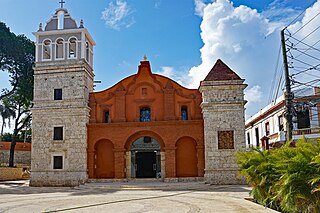
The Santa Bárbara Military Cathedral is a colonial Eclectic Catholic cathedral dedicated to Saint Barbara that is located in the Ciudad Colonial of Santo Domingo, in the Dominican Republic. Its official name is Santa Iglesia Catedral Castrense Santa Bárbara de los Hombres de la Mar. It is located in the Santa Bárbara de los Hidalgos Canteros sector, at the intersection of calle Isabel La Católica with calle General Gabino Puello, right on the edge of the Wall that protected the first Spanish viceroyalty in the New World.





